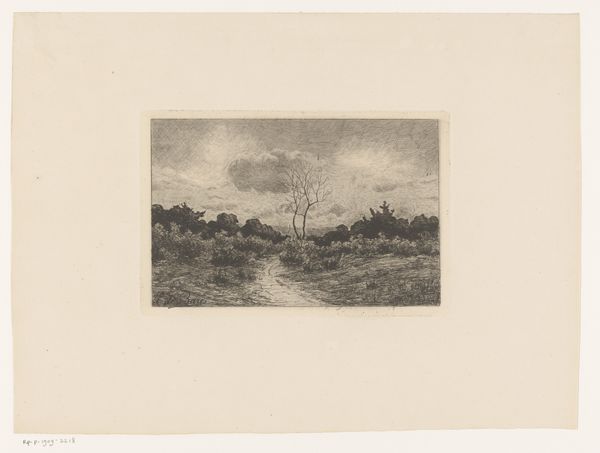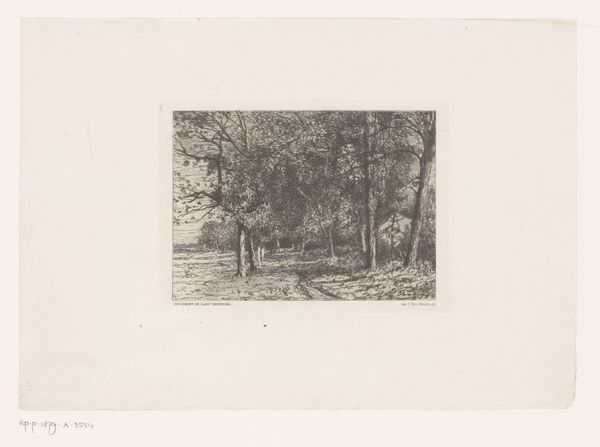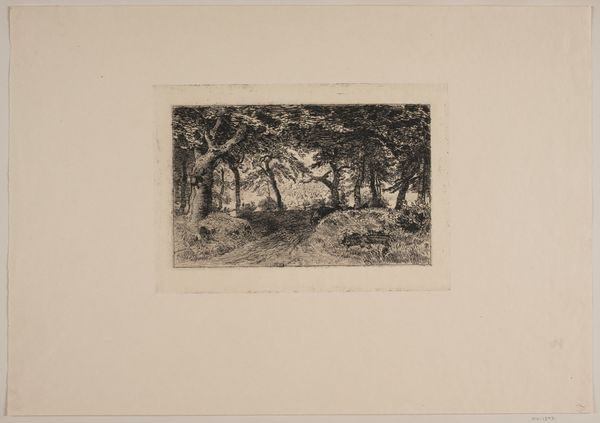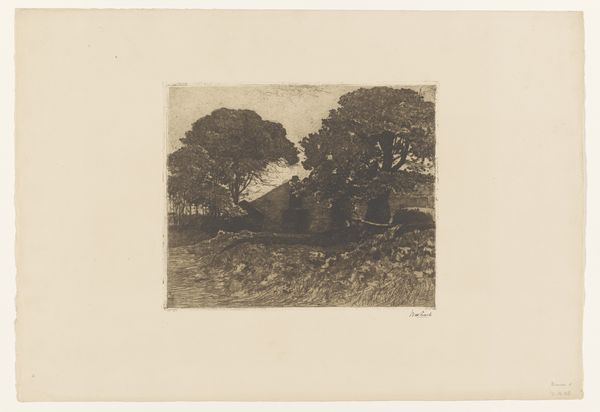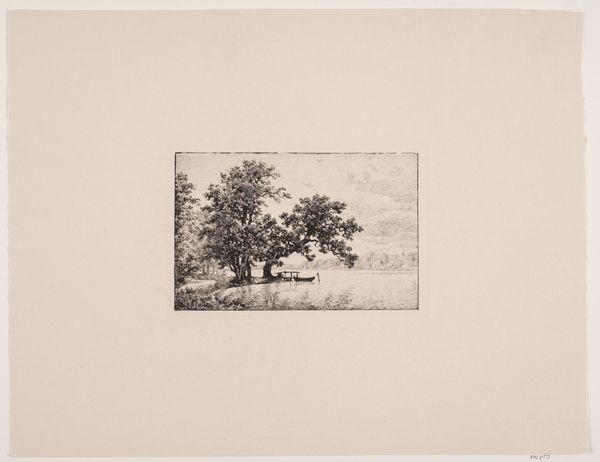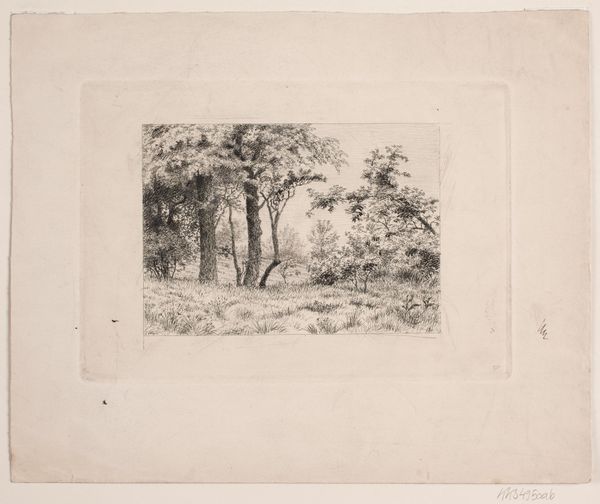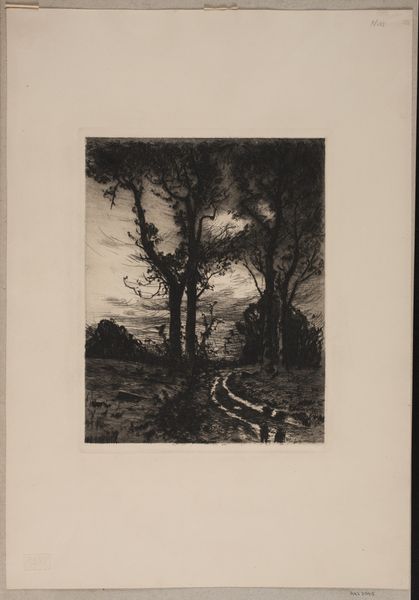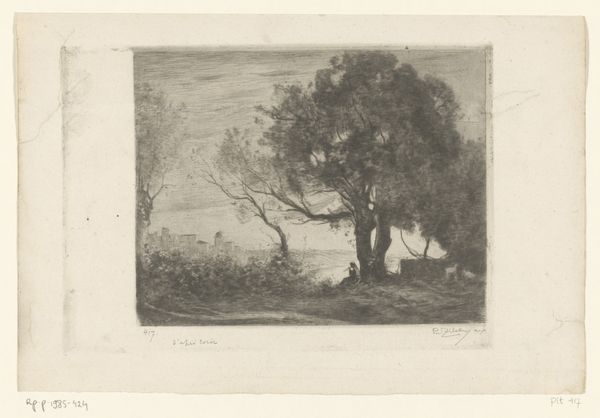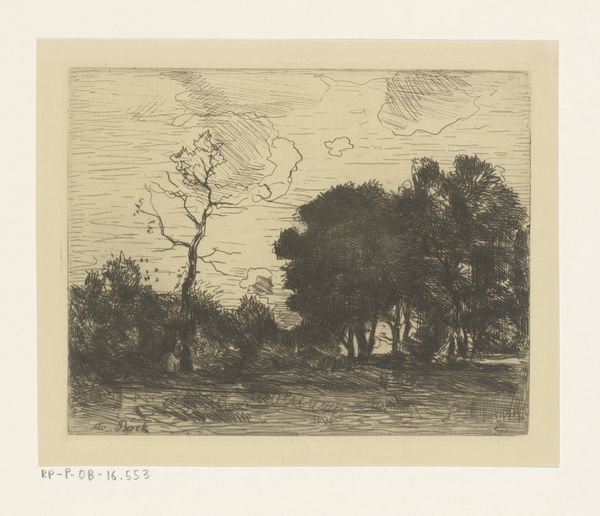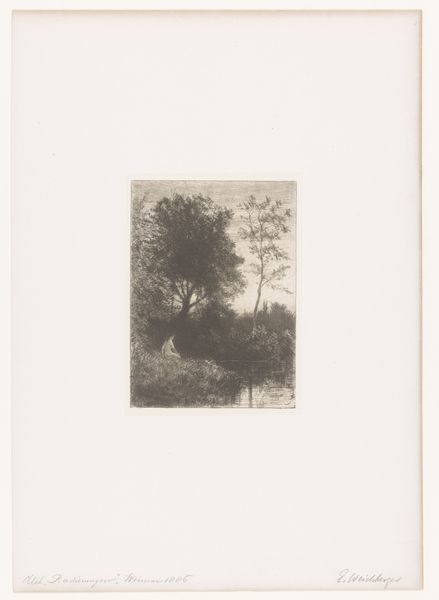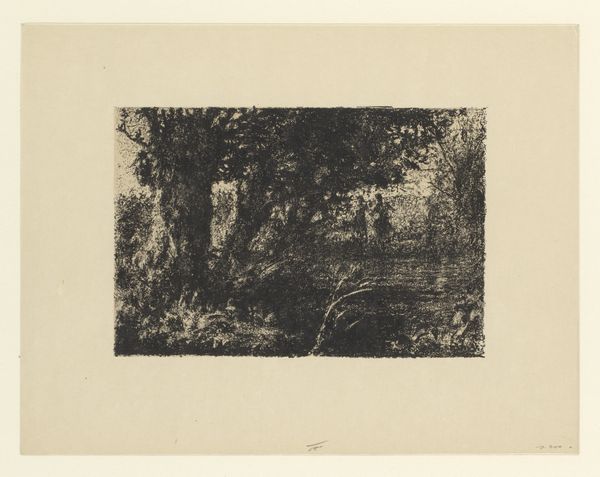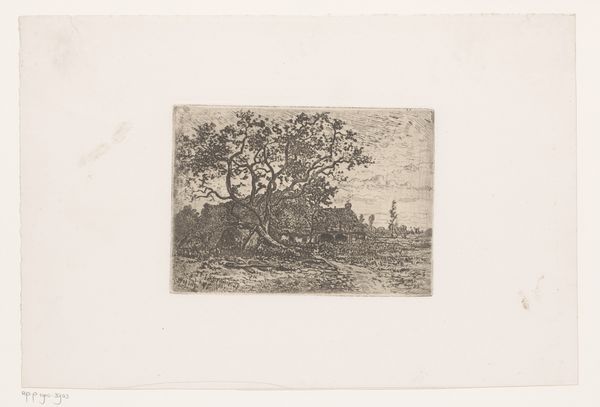
print, etching
# print
#
etching
#
landscape
#
forest
Dimensions: height 237 mm, width 316 mm
Copyright: Rijks Museum: Open Domain
Editor: We're looking at "View of a Landscape near Vézelay," an 1878 etching by Adolphe Guillon. It has this lovely, soft quality, like looking at a memory. The trees are the dominant forms, but the way the sky is rendered is captivating. What stands out to you? Curator: The effectiveness of this piece hinges on its formal properties, specifically the deployment of line and value. Observe the meticulous, almost frenetic etching in the sky. Its uniform texture contrasts starkly with the clustered, darker values used to depict the trees and foliage. The balance creates a fascinating visual tension, almost vibrating with energy. Editor: That contrast is definitely there. Is the texture in the sky the main thing, formally speaking? Curator: No. Note how the composition adheres to a classical landscape structure, dividing the scene into distinct horizontal bands, moving from the dark foreground, the elevated horizon line occupied by the trees, and then to that ethereally rendered sky. This layering guides the eye. What about the artist’s mark making? Does anything strike you there? Editor: The short, quick lines used for the grass create a sense of depth, even though it's all monochrome. Curator: Precisely! It's through variations in line density and direction that Guillon achieves a remarkable sense of volume and space, all within the constraints of the etching medium. The restricted tonal range underscores the formal complexity of the artwork. Editor: It’s amazing to think about how much is communicated through something so simple. I see how studying its structure helps in understanding its effect. Curator: Yes, sometimes less truly is more. A study of art’s composition informs how the artist is choosing what and how we see, directing our perspective and framing our very interpretation.
Comments
No comments
Be the first to comment and join the conversation on the ultimate creative platform.
